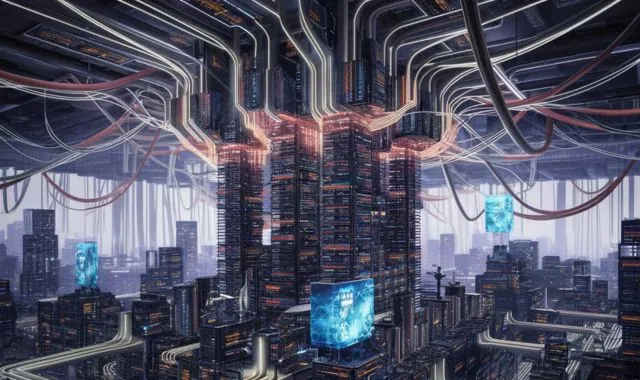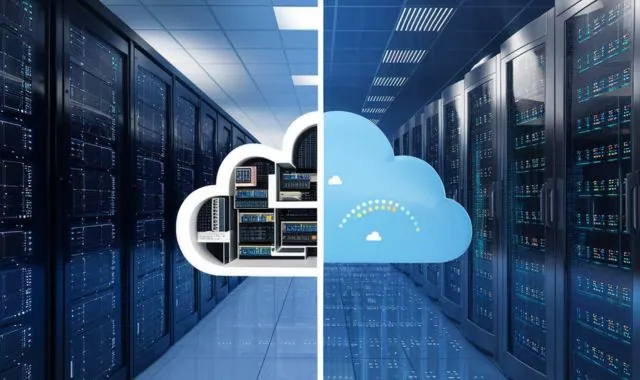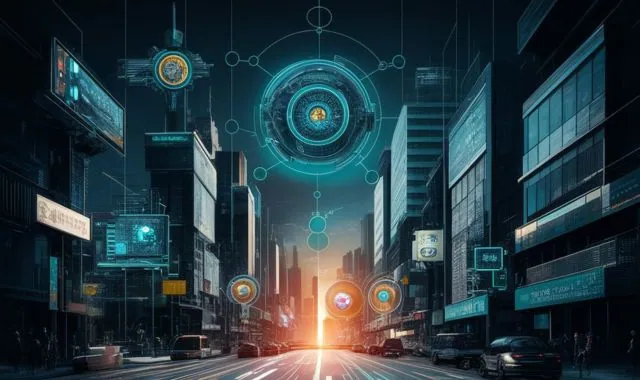Physical Address
304 North Cardinal St.
Dorchester Center, MA 02124

Our digital world relies on technology infrastructure, the unseen foundation of hardware, software, and networks. This includes physical devices like servers and routers, along with software that makes them work. Cloud computing offers a flexible alternative to traditional on-premise infrastructure. Understanding these components and emerging trends like AI and edge computing is crucial for building a secure and adaptable digital future.

In today’s hyper-connected world, technology infrastructure serves as the invisible yet critical foundation for our digital lives. It’s the intricate network of hardware, software, and communication systems that power everything from online shopping to social media, and from business operations to scientific research. But what exactly makes up this complex ecosystem, and how can we ensure it remains robust and secure? This comprehensive guide delves into the fascinating world of technology infrastructure, exploring its essential components, deployment models, and the exciting trends shaping its future.
Technology infrastructure, often called IT infrastructure, refers to the combined physical and digital resources required for the operation of IT services. It’s the bedrock upon which all our digital interactions are built. Let’s break down the essential building blocks:
This encompasses the physical devices that make everything work, including servers for data storage and processing, storage devices to hold information, and networking equipment that allows communication between different systems.
Software Components:
The software layer governs how the hardware performs. It includes operating systems that manage hardware resources, applications like web servers and productivity suites that enable specific functions, and security software to protect the entire system.
For many years, organizations relied on on-premise infrastructure, where all hardware and software resided within their physical facilities. This approach offers:

However, on-premise solutions also come with drawbacks:
High Costs:
Investing in, maintaining, and upgrading hardware and software can be expensive.
Scalability Challenges:
Expanding or scaling IT resources can be slow and cumbersome.
Security Burdens: Maintaining robust cybersecurity requires dedicated personnel and expertise.
The emergence of cloud computing has revolutionized technology infrastructure. Cloud infrastructure offers a pay-as-you-go model, where IT resources like storage and processing power are delivered over the internet. This brings several advantages:
Cost-Effectiveness: Businesses only pay for the resources they use, eliminating the upfront costs of hardware and software.
Security and Reliability: Cloud providers invest heavily in security measures and offer robust disaster recovery solutions.
Cloud deployment models cater to different needs:
Public Cloud: Shared resources offered by cloud service providers like Amazon Web Services (AWS) or Microsoft Azure.
Private Cloud: Dedicated cloud infrastructure for a single organization, often managed on-premises or by a third-party provider.
Hybrid Cloud: A combination of public and private cloud resources, offering flexibility and control.
Network infrastructure acts as the invisible nervous system that connects all the components within a technology infrastructure. Different network types serve specific purposes:

Local Area Network (LAN): Connects devices within a limited geographical area, like a home or office.
Wide Area Network (WAN): Connects geographically dispersed networks, enabling communication across cities or even continents.
Metropolitan Area Network (MAN): Covers a larger geographic area than a LAN, typically encompassing a city or town.
Robust network security is paramount to safeguard data and prevent unauthorized access. Firewalls, intrusion detection systems, and encryption are crucial tools for maintaining a secure network environment.
Technology infrastructure is constantly evolving, with several exciting trends shaping its future:
Edge Computing: Processing data closer to where it’s generated, reducing latency and improving efficiency for applications like the Internet of Things (IoT).
Artificial Intelligence (AI) and Machine Learning (ML) for Infrastructure Management: Leveraging AI and ML to automate tasks like infrastructure monitoring, resource optimization, and predictive maintenance.
The Growing Importance of Data Centers: As data creation continues to explode, data centers will play a critical role in providing secure and scalable storage solutions.
Creating a strong and reliable technology infrastructure requires careful planning and ongoing maintenance. Here are key considerations:
Needs Assessment and Planning: Thoroughly evaluate your organization’s IT needs and develop a strategic roadmap for infrastructure development.
Security Considerations: Prioritize security throughout the infrastructure lifecycle, incorporating robust security measures and best practices.
Ongoing Maintenance and Upgrades: Regularly update hardware, software, and firmware to address vulnerabilities and maintain optimal performance.

Technology infrastructure serves as the foundation for our digital existence. By understanding its components, deployment models, and emerging trends, we can build robust and secure systems that empower innovation and progress in every aspect
Here are some frequently asked questions to complement your comprehensive guide on technology infrastructure:
General:
What are some of the biggest challenges facing technology infrastructure today?
What are the different types of IT professionals involved in managing technology infrastructure?
On-Premise vs. Cloud Infrastructure:
Is on-premise infrastructure still relevant in today’s world?
How can I decide whether on-premise or cloud infrastructure is right for my business?
Can I combine on-premise and cloud infrastructure?
Security:
What are the most important security considerations for technology infrastructure?
How can I protect my infrastructure from cyberattacks?
What are some of the emerging security threats facing technology infrastructure?
Future Trends:
How will artificial intelligence (AI) impact technology infrastructure?
What is the role of edge computing in the future of technology infrastructure?
How can businesses prepare for the evolving landscape of technology infrastructure?